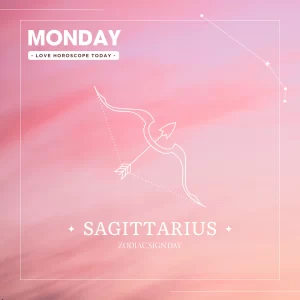
Taurus, the Latin term for “the Bull,” stands as one of the zodiac’s constellations, positioned in the northern celestial hemisphere. It commands a prominent presence in the winter sky of the Northern Hemisphere. This constellation boasts an ancient heritage, dating back to at least the Early Bronze Age, where it served as a marker for the Sun’s position during the spring equinox. Its significance in the agricultural calendar influenced various bull-related figures in the mythologies of Ancient Sumer, Akkad, Assyria, Babylon, Egypt, Greece, and Rome. Its traditional astronomical symbol, ♉︎, resembles the head of a bull.
Taurus holds a multitude of intriguing features for astronomers. Within its boundaries, Taurus is home to two of the closest open clusters to Earth: the Pleiades and the Hyades, both readily observable with the naked eye. Among its celestial inhabitants, the red giant star Aldebaran shines as the brightest, boasting a first magnitude. Nestled in the northeastern region of Taurus lies Messier 1, more commonly known as the Crab Nebula—a supernova remnant that houses a pulsar. Taurus also encompasses one of the nearby active star-forming regions, the Taurus-Auriga complex, extending into its northern expanse. Among its stellar residents, the variable star T Tauri stands as the archetype for a class of pre-main-sequence stars.
Characteristics
Taurus, a substantial and conspicuous constellation, graces the northern hemisphere’s winter sky. It resides between Aries to the west and Gemini to the east, sharing its borders with various neighboring constellations. To the north, it neighbors Perseus and Auriga, while Orion lies to the southeast, Eridanus to the south, and Cetus to the southwest. Taurus reaches opposition, its furthest point from the Sun, in late November to early December, making it visible throughout the entire night during this period. However, as late March arrives, Taurus begins to set at sunset and gradually disappears behind the Sun’s brilliance from May to July.
Taurus is a part of the zodiac, intersected by the ecliptic—the apparent path of the Sun as Earth completes its annual orbit. This intersection with the ecliptic means that the Moon and the planets, whose orbital planes align closely with the ecliptic, often traverse the constellation Taurus at some point during the year. Additionally, the Milky Way’s galactic plane intersects the northeast corner of Taurus, with the galactic anticenter positioned near the border between Taurus and Auriga. Taurus stands as the unique constellation crossed by all three major celestial reference planes: the galactic equator, celestial equator, and ecliptic. Within its boundaries, a ring-like galactic structure known as Gould’s Belt traverses the region.
For astronomical convenience, the International Astronomical Union designated the three-letter abbreviation for Taurus as “Tau.” Belgian astronomer Eugène Delporte defined the official constellation boundaries in 1930, outlining them with a polygon composed of 26 segments. These borders, in the equatorial coordinate system, span from right ascension coordinates of 03h 23.4m to 05h 53.3m and declination coordinates ranging from 31.10° to -1.35°. While Taurus is a predominantly circumpolar constellation, a small portion extends south of the celestial equator, preventing it from being entirely circumpolar at any latitude.
History and mythology
The association of the constellation Taurus with a bull has a rich and ancient history, potentially dating back to the Chalcolithic era, and possibly even further to the Upper Paleolithic. Notably, Michael Rappenglück of the University of Munich has suggested that Taurus is depicted in a cave painting within the Hall of the Bulls at Lascaux, an artwork that may date back to approximately 15,000 BC. Rappenglück believes that this depiction is accompanied by an illustration of the Pleiades, a celestial cluster often referred to as the “seven sisters.” Interestingly, the name “seven sisters” has been used for the Pleiades in various cultures around the world, including indigenous groups in Australia, North America, and Siberia, hinting at a shared ancient origin for this name.
Taurus played a pivotal role in ancient astronomical calendars, particularly in marking the vernal (spring) equinox during the Chalcolithic and Early Bronze Age, spanning from roughly 4000 BC to 1700 BC. After this period, it gradually transitioned into the neighboring constellation Aries. The Pleiades, a prominent star cluster within Taurus, closely approached the Sun during the vernal equinox around the 23rd century BC. In Babylonian astronomy, Taurus was referred to as GU4.AN.NA, known as “The Bull of Heaven.” While some claims suggest that the vernal equinox initially fell within Taurus when the Babylonians established their zodiac, there is also evidence pointing to the Babylonian constellation known as “the hired man” (modern Aries) marking this significant celestial event.
In the Old Babylonian Epic of Gilgamesh, Taurus is personified as the “Bull of Heaven,” sent by the goddess Ishtar to confront Gilgamesh for rejecting her advances. In this epic, Gilgamesh’s companion, Enkidu, subdues the bull and offers its hindquarters to the sky, transforming them into the stars we recognize today as Ursa Major and Ursa Minor. Some interpretations place Gilgamesh in the neighboring constellation of Orion, engaged in a celestial battle with Taurus, while others associate him with the Sun, signifying the victory of light over the constellation.
Early Mesopotamian art frequently linked the Bull of Heaven closely with Inanna, the Sumerian goddess of love, fertility, and warfare. In one of the oldest depictions, the bull stands before the goddess’ standard, accompanied by the cuneiform sign for “star-constellation,” which could be interpreted as the precursor to the modern Taurus constellation.
A similar depiction of the Heavenly Bull was found in the Dendera zodiac, an Egyptian bas-relief carving that represented the celestial hemisphere using a planisphere. Notably, the orientation of the bull’s horns in ancient cultures varied, with some portraying them as pointing upward or backward, distinct from the Greek depiction where they point forward. In Egyptian culture, Taurus symbolized a sacred bull linked to the rejuvenation of life during spring, as its appearance marked the sacrifice and renewal of the land when the spring equinox entered Taurus.
In Greek mythology, Taurus was associated with Zeus, who transformed into a magnificent white bull to carry off Europa, a renowned Phoenician princess. In some Greek illustrations, only the front part of Taurus is depicted, reflecting the idea that Europa was partly submerged as she was carried away by the bull. Another Greek myth features Taurus as Io, a lover of Zeus, who was transformed into a heifer to conceal her from Zeus’ wife, Hera. This transformation led to Taurus being associated with the heifer.
The Druids held Taurus in high regard, celebrating a Tauric religious festival aligned with the Sun’s passage through the constellation. Among the Inuit people, Taurus is referred to as Sakiattiat, and the Hyades stars are called Nanurjuk, representing the spirit of the polar bear. Aldebaran, one of the stars in Taurus, symbolizes the bear, while the remaining Hyades stars are portrayed as dogs guarding the beast.
In Buddhism, legends suggest that Gautama Buddha was born when the full moon was in Vaisakha, or Taurus. The Wesak Festival, or Vesākha, is celebrated to commemorate Buddha’s birthday, occurring on the first or second full moon when the Sun is in Taurus.
Notably, in 1990, due to the precession of the equinoxes, the Sun’s position on the first day of summer (June 21) shifted from Gemini into Taurus, marking an astronomical shift. Over time, the Sun will gradually traverse Taurus at a rate of 1° eastward every 72 years, with an expected transition into Aries on the first day of summer around 2600 AD.
Taurus | Famous NBA players

Paul George
(1990.5.2)
Paul George is a renowned professional basketball player from the United States. Born on May 2, 1990, in Palmdale, California, he has established himself as one of the premier players in the NBA. George played college basketball for the Fresno State Bulldogs before being selected by the Indiana Pacers with the 10th overall pick in the 2010 NBA Draft.
Throughout his illustrious career, Paul George has been recognized for his exceptional skills and has received numerous accolades. He is a multiple-time NBA All-Star and has been named to several All-NBA Teams. George’s versatility on the court allows him to excel in both offensive and defensive roles, making him a valuable asset to any team.
In addition to his time with the Indiana Pacers, George has also played for the Oklahoma City Thunder and the Los Angeles Clippers. His ability to perform in clutch situations and his leadership qualities have endeared him to fans and teammates alike.
Off the court, Paul George has been involved in various charitable activities and has shown a commitment to giving back to the community. His journey from a young basketball enthusiast in Palmdale to an NBA superstar serves as an inspiration to many aspiring athletes around the world.
In summary, Paul George is not only an outstanding basketball player but also a role model for many. His dedication, hard work, and passion for the game have cemented his legacy as one of the greats in the world of basketball.
Related article
Pisces Love Horoscope Today – 2023.12.25
Pisces Love Horoscope Today Pisces Love Horoscope Today With Aries:...
Read MoreAquarius Love Horoscope Today – 2023.12.25
Aquarius Love Horoscope Today Aquarius Love Horoscope Today With Aries:...
Read MoreCapricorn Love Horoscope Today – 2023.12.25
Capricorn Love Horoscope Today Capricorn Love Horoscope Today With Aries:...
Read MoreSagittarius Love Horoscope Today – 2023.12.25
Sagittarius Love Horoscope Today Sagittarius Love Horoscope Today With and...
Read More







